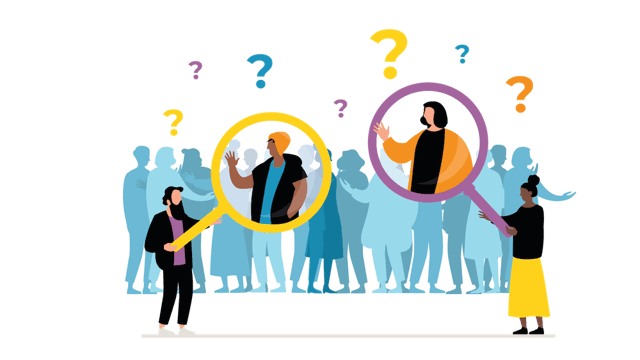Every company focuses on its customers. However, many companies – especially large ones – have personnel who do not face customers, at least not frequently.
For this reason, company values often mention customers. The values typically include phrases such as ‘’customer-first’’, ‘’we focus on our customers’’, or ‘’customer-centricity’’. In the mandatory speeches during summer and Christmas parties, your CEO mentions customers several times. The customer is included in every internal process of the company so that you do not forget the customer.
And, of course, there’s the old truism: “Customers pay our salaries!’’
But what do we mean by the ‘’customer’’?
Who the customer is depends on the context and environment. The customer is not one.
Imagine a meeting: you and your colleagues discuss the customer and what is essential in your product for the customer. There are several participants in the meeting, and their priorities are not the same for some reason. When your colleagues talk about the highest priority feature, it’s not the same one you have in mind. All participants may have a different view of what is important. The reason might be that they talk about the customer they have met or discussed with most recently. You are not talking about the same customer at all! The customer is not one.
In B2B, you can start by assuming the customer is an organization buying your products and services. Inside the company, there are several types of customers. The simplest way to manage the multitude is to divide the customers into two main groups: the users and the buyers.
Customers as users
The users are persons in roles related to the use of your product. Some examples of users include:
- Daily users of your product. They are the ones who interact with your product the most frequently.
- Key (admin) users of your product. The persons who master the product from a user perspective. These people help the other users and may perform some maintenance and support actions.
- Technical staff managing and implementing the installation and commissioning of your product
- Maintenance and support team members who keep your product up to date and help other users in problem situations.
- Service personnel who consume the product or service.
- System integrators, the people or organizations building integrations and building complete solutions.
- Your re-sellers’ personnel
- And many more
Customers as buyers
The buyers are persons in roles participating in the purchasing process:
- Technical evaluators. This person evaluates the technical side of your solution.
- Decision-makers. This person approves the investment. This is a vital role and sometimes challenging to manage as we do not necessarily meet them in person.
- Procurement officers. Professional buyers who negotiate prices and the terms and conditions of the deal.
- External consultants (evaluators or references). Somebody who impacts the decision-making. Typically they are related to technical perspective, but can be persons recommending your product or company on other means as well.
- Re-sellers’ personnel. These persons serve as part of the sales channel with technical and commercial interests.
- And many more. Sometimes the buyers are hard to identify.
Don’t forget your internal customers
Many of us also have internal customers – people inside your organization that you need to serve.
- Business Owners (SAFe) + other stakeholders (people who have the interest and influence to impact your product, program, team, or project)
- Users of internal IT services
- Internal Stakeholders, i.e., neighboring teams needing something from you.
- Colleagues in other departments
The role of each customer type is different.
What does this mean to product organizations?
Having several groups of customers with varying needs and interests makes life challenging for product organizations. There are several things you can and should do:
- You need to understand who your customers are.
- When developing products, the users are the most important customers.
- When marketing and selling products, the buyers are the most important customers.
- Note that there are often internal customers who are related to users or buyers
- You need to prepare Customer personas for the most critical and typical customers. A good starting point is creating separate user and buyer personas. This helps you understand and communicate what's essential to each customer persona.
- Prepare personalized value propositions for each persona. By doing that, we always have ready-made answers to ‘’what's in it for me’’ for all customers!
- User personas should be linked to work items like features, user stories
- Buyer personas should be linked to marketing materials, sales collaterals, etc.
Why is this important?
Customers are not interested in you or your product or technology. Customers are interested in their particular problems and needs to get their job done. You need to understand them to build the right products and show their value to them!
The value you created for somebody else is irrelevant in the customer's mind. Customer understanding is needed so that what you communicate is relevant to your customers and buyers.
You should not be complacent: your competitors have probably already moved from core products and technology to complete customer experiences. Most customers do not want to invest in just technology unless that’s precisely what gives them a competitive edge. Customers are interested in solving their problems and needs easily and effectively as buyers and users of your product.
Published: Apr 20, 2022


